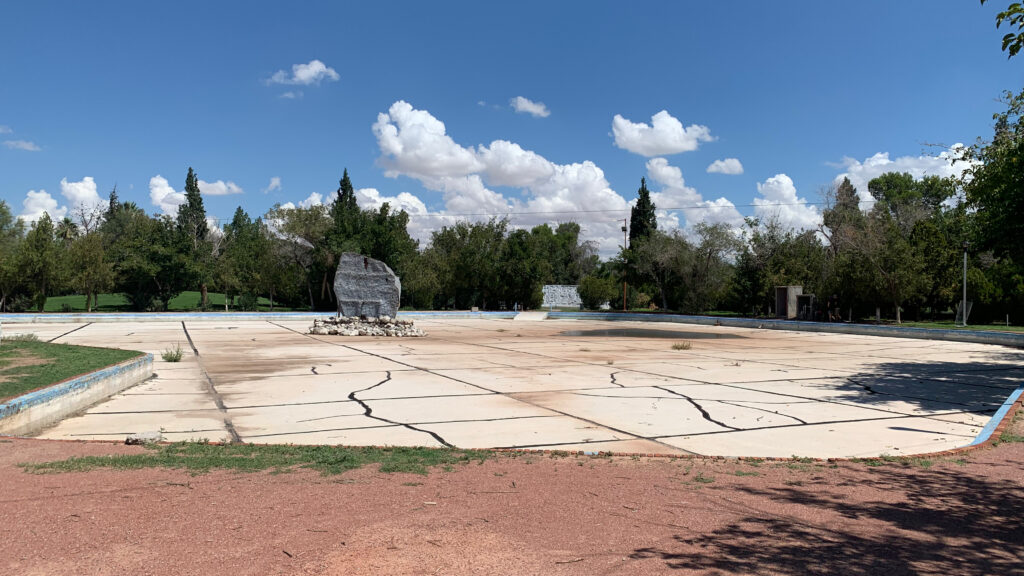
Aus dem Blog unserer Reise nach Mexiko 2022
By Rosa Philipp
On this day we went to the Parque Chamizal, which is a park with a lot of trees, where the people of Juárez come to spend some time with friends and family to camp and have barbecues on holidays and weekends. The park was in danger of being privatized and a convention center was to be built, but several organizations of the city of Juárez stopped it. At the Museo de Arqueología e Historia de El Chamizal we met a representative of the indigenous community of the N´dee/N´ee/Ndé. We sat down underneath the trees and he told us about the history of his community. The N´dee/N´ee/Ndé community, mostly known as Apache, which is the name they were given by the Spanish colonizers and which means “men who fights or enemy” and is therefore not used by the community itself, were invisibilized and do not appear in the recent history.
The community of the N´dee/N´ee/Ndé fought to be recognized as an indigenous community. Therefore they began to collect their history, their history was passed from generation to generation in oral history. The recognition by the Mexican State is important to conserve their language and culture. As the invisibilization was very brutal, the existence of the N´dee/N´ee/Ndé community was denied and they had to hide to be able to survive. Until the 1940ies they were in danger to be murdered without justice when they showed their indigenous identity. So the families lived aislated and only recently started to connect themselves and join the forces to fight for the recognition. As the Parque Camizal was in danger of being privatized, the Ndé community claimed some of their ancestral territories, which happened to be the Parque El Chamizal. The fight of the N´dee/N´ee/Ndé community has several foci, the reconstruction and rewriting of the history, social fight and the claim for territories.
In Ciudad Juárez they also connected with the other indigenous communities of Mexico, as Ciudad Juárez is a place of migrants, so almost every indigenous community of Mexico has representatives in Juárez. Local communities of Chihuahua are Tarahumaras, Tepehuanos del norte, Pimas, Guarijó and Ndé.
